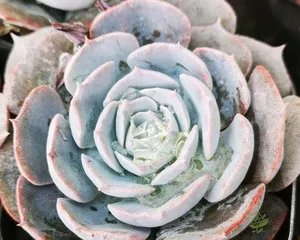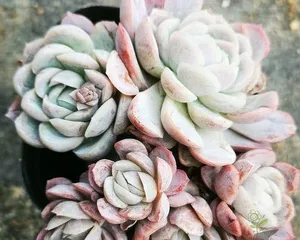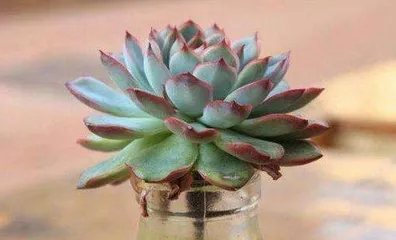Succulents have become a top choice for many plant lovers due to their beauty, ease of care, and strong adaptability. However, for beginners, they may not be very familiar with the key points of caring for succulents in winter. This article will detail the things to pay attention to when caring for succulents in winter.

Choose a suitable location for care
Succulents need to stay warm in winter, so it's important to choose a relatively warm indoor place for care, such as the living room or balcony. At the same time, pay attention to indoor ventilation to prevent succulents from getting damp.
Maintain a suitable temperature
When growing indoors, succulents need to be kept at a temperature above 15°C, as temperatures below this can cause the succulents to freeze and die.

Control the amount of watering
In winter, the growth rate of succulents slows down, so the amount of watering should also be reduced appropriately. In general, watering once a week is sufficient.
Pay attention to light exposure
Succulents need plenty of sunlight to grow normally, but sunlight is scarcer in winter, so it's important to pay attention to their light exposure. You can place the succulents outdoors to sunbathe during the day when the sun is good.
Appropriately increase humidity
Succulents prefer a dry environment, but the dry air in winter can damage them. Therefore, you can appropriately increase the indoor humidity, such as by using a humidifier or placing a wet towel, etc.

Prevent succulents from being exposed to cold wind
The wind is strong and cold in winter, which is also harmful to succulents and can cause them to freeze. Pay attention to avoiding direct exposure of succulents to cold winds.
Fertilize appropriately
In winter, the growth rate of succulents slows down, but fertilization should not be stopped completely. Appropriate fertilization can ensure a nutrient supply for succulents and promote their normal growth.
Pay attention to pest and disease control
Winter is a season when pests and diseases are more likely to breed, so it is necessary to pay attention to prevention and control. Some non-toxic pest and disease control methods can be used, such as spraying pure water.
Pay attention to the dormancy period of succulents
Winter is the dormancy period for succulents, so during this time their growth rate will slow down or even stop, which is a normal phenomenon and nothing to worry about.
Arrange succulents reasonably
In winter, succulents need to be placed appropriately to avoid direct contact with cold floors or windowsills. You can use flower pot stands or place some soft pads to avoid direct contact.
Pay attention to repotting
If the soil of the succulent has aged or the soil texture is too sticky, it needs to be replaced in time to avoid affecting its normal growth.
Pay attention to the care methods for different varieties
The care methods for different varieties of succulents in winter are also different, and different measures need to be taken according to the specific situation.
Avoid direct spraying of water
In winter, succulents need to avoid direct spraying of water, as this can cause them to freeze and die. You can use soaking or misting methods for watering.
Pay attention to the nutritional needs of succulents
In winter, the nutritional needs of succulents decrease, so it is necessary to appropriately control the amount of fertilizer to avoid over-fertilization.
Succulents are beautiful and easy-to-grow plants, but they also require special attention to their care in winter. Only by reasonably selecting the care location, maintaining a suitable temperature, controlling the amount of watering, paying attention to light exposure, etc., can we ensure the normal growth and health of succulents.